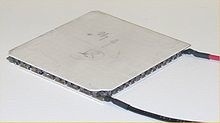Electronic communications systems are made up of three basic components: a transmitter, a receiver, and a transmission medium. Use a video game system with a wired controller as an example. The controller is a transmitter, while the console is a receiver, and the wire that connects the two is the transmission medium. This wire is typically made up of copper. The distance from a couch to your tv is relatively short compared to the distance two continents separated by an ocean. For this distance fiber optic cables are used. Instead of electrical signals being transmitted, lasers are used to generate light across fibers of glass.
Until recently, to transmit 1s and 0s the laser would turn the light would be pulsed on from an off state. Researchers at the National Institute of Standards Technology (NIST) and the University of Colorado have reversed the process and have successfully generated a series of “dark pulses.”
Any transmission medium will have irregularities which disrupt communications. What the researchers have found is that by sending Dark Pulses they can minimize the irregularities typically found in Fiber.
According to the lead researcher, Richard Mirin of NIST, it will be a few years before this technology makes it into the commercial marketplace.
More information can be found in this article at PhysicsWorld.



